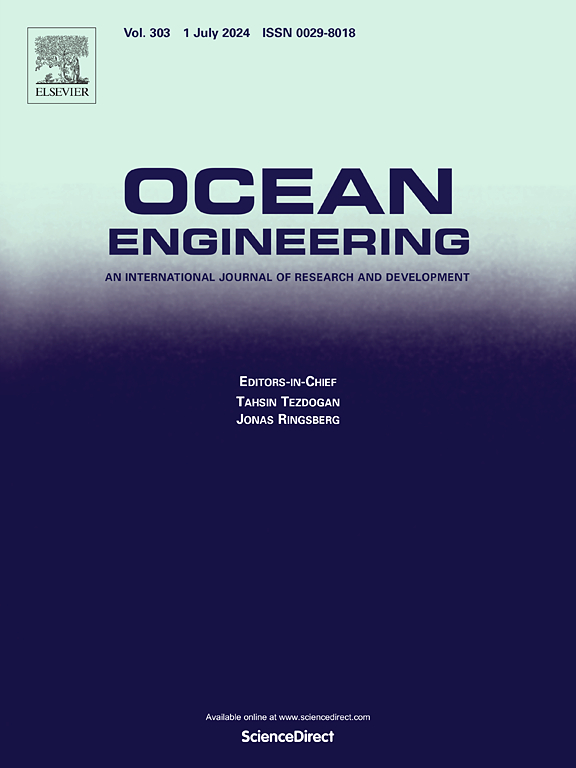采用柔性翅片串联布置的下游气缸减阻
IF 5.5
2区 工程技术
Q1 ENGINEERING, CIVIL
引用次数: 0
摘要
在双串联式气缸系统中,当两个气缸之间的间隙距离(G/D)超过临界距离(共脱落状态)时,下游气缸的阻力会突然增加。为了减少G/D = 4时下游圆柱体上的阻力,我们提出了一种新的附加被动柔性鳍的下游圆柱体构型,并通过改变鳍的长度(L/D)和弯曲刚度(γ)对阻力行为进行了数值评估。在(L/D, γ)的状态图中,鳍出现了三种不同的扑动状态:极限环扑动、混沌扑动和偏转模式。在小(L/D, γ)的极限环扑动模式下,由于抑制了旋涡脱落,作用在具有被动翅片系统的下游圆柱体上的阻力最小,与没有鳍片的纯下游圆柱体相比减少了42.5%。通过将主动俯仰运动应用于附在下游气缸上的柔性鳍,进一步提高了减阻性能。由于主动尾翼通过其前缘周围的大曲率产生推力,因此获得了48.1%的最大阻力减少,尽管尾翼后面的尾迹结构以von Kármán涡为特征。本文章由计算机程序翻译,如有差异,请以英文原文为准。
Drag reduction of a downstream cylinder in a tandem arrangement using a flexible fin
In a two-tandem-cylinder system, the downstream cylinder experiences a sudden increase in drag when the gap distance between the two cylinders (G/D) exceeds a critical distance (co-shedding regime). To reduce such drag on the downstream cylinder when G/D = 4, we propose a new configuration of a downstream cylinder with an attached passive flexible fin, and the drag behavior is numerically assessed by varying the length (L/D) and bending rigidity (γ) for the fin. Three distinct flapping states of the fin emerge in the regime map of (L/D, γ): limit-cycle flapping, chaotic flapping and deflected mode. In the limit-cycle flapping mode under a small (L/D, γ), the drag acting on the downstream cylinder with a passive fin system is minimized, showing a 42.5 % reduction compared to that on a pure downstream cylinder without a fin due to the vortex shedding suppression. A further increase in drag reduction performance is achieved by applying active pitching motion to the flexible fin attached to the downstream cylinder. A maximum drag reduction of 48.1 % is obtained as the active fin generates thrust through a large curvature around its leading edge, although the wake structure behind the fin is characterized by a von Kármán vortex.
求助全文
通过发布文献求助,成功后即可免费获取论文全文。
去求助
来源期刊

Ocean Engineering
工程技术-工程:大洋
CiteScore
7.30
自引率
34.00%
发文量
2379
审稿时长
8.1 months
期刊介绍:
Ocean Engineering provides a medium for the publication of original research and development work in the field of ocean engineering. Ocean Engineering seeks papers in the following topics.
 求助内容:
求助内容: 应助结果提醒方式:
应助结果提醒方式:


